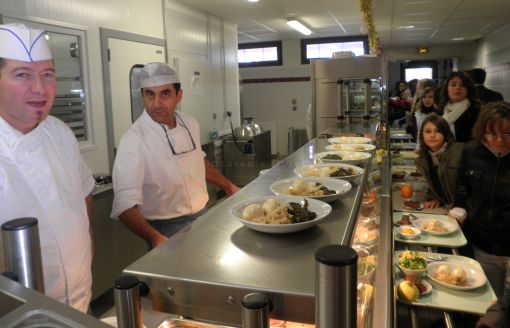
Government is hopeless. Endless meetings, competing agendas, bruised egos – all in an effort to get a national salmonella-egg rule passed going back to the 1980s.
The Washington Post has a blow-by-blow account of the bureaucratic wankfest that is federal egg safety, which will keep politicos intrigued with  their Saturday morning lattes and eggs Benedict, but offers nothing for the over-easy crowd.
their Saturday morning lattes and eggs Benedict, but offers nothing for the over-easy crowd.
The salmonella-in-eggs outbreak this summer sickened over 1,900 with plenty of blame to go around – negligent ownership, lax inspections, awful auditors and retailers who didn’t want to know. But after reading the Post account, does anyone really want the feds in charge?
Lester Crawford, whose own bout with salmonella in 1986 turned the issue into a personal battle, pushed for egg regulation while running the food safety program at the U.S. Department of Agriculture from 1987 to 1991, and he said he was stunned by the lack of progress when he joined the Food and Drug Administration as acting deputy commissioner in 2002.
"The system certainly was at its worst. … I went nuts. I was told it was ready to go and all we needed to do was say yes, so I said yes.”
He kept up the fight through 2005, when he left the agency.
The regulations that took effect this year require farmers to buy chickens that are certified free of salmonella, test those chickens while they are laying eggs and, if there is a positive test, stop selling whole eggs.
In the absence of federal regulation, some states began in the 1990s to enact their own rules, many focused on refrigeration. But the varying .jpg) requirements created headaches for producers selling nationwide.
requirements created headaches for producers selling nationwide.
The health of chickens falls under the USDA, but the FDA oversees the safety of whole eggs. Once an egg is broken and made into an "egg product," responsibility for its safety switches back to the USDA.
The USDA also oversees transportation of whole eggs, but the FDA dictates how they should be stored once they reach restaurants or stores.
Because salmonella wasn’t making chickens sick, the USDA initially decided not to intervene. USDA inspectors are in packing facilities, but henhouses normally are the purview of the FDA. And the FDA rarely inspected henhouses.
The FDA has not routinely inspected egg farms because it has not established rules or standards, Deputy Commissioner Joshua M. Sharfstein said.
I get that the feds failed. But as a consumer, am I supposed to have faith that FDA has checked out Salmonella Jack DeCoster’s operations, now that his eggs are back on retail shelves?
What if I want to avoid DeCoster’s eggs, because he has a bad track record and will soon be slip-slidin’ away to the lowest common denominator?
Repeated outbreaks have shown there are good producers and bad producers, good retailers and bad retailers. As a consumer, I have no way of knowing.
Tell consumers about salmonella-testing programs meant to reduce risks; put a URL on egg cartons so those who are interested can use the  Internet or even personal phones to see how the eggs were raised and testing data. The best producers and processors will go far beyond the lowest common denominator of government and should be rewarded in the marketplace.
Internet or even personal phones to see how the eggs were raised and testing data. The best producers and processors will go far beyond the lowest common denominator of government and should be rewarded in the marketplace.
Sorenne, eggs for breakfast?

.jpg) investigation. A property owner will also be contacted."
investigation. A property owner will also be contacted."(8).jpg) the restaurant was cut off due to a water-main break. The restaurant was shut down by the region that month, but reopened with a clean bill of health in August that year.
the restaurant was cut off due to a water-main break. The restaurant was shut down by the region that month, but reopened with a clean bill of health in August that year.
 including structural defects and poorly maintained equipment.
including structural defects and poorly maintained equipment. £18,000.
£18,000.

 Mongols and Turks who, under the leadership of Genghis Khan, conquered much of Asia and eastern Europe in the early 13th century. I can’t vouch for the safety of what they ate.
Mongols and Turks who, under the leadership of Genghis Khan, conquered much of Asia and eastern Europe in the early 13th century. I can’t vouch for the safety of what they ate. Choose your poisons.
Choose your poisons. giving diners the power to access detailed inspection reports of food businesses through their mobile phones and other data devices.
giving diners the power to access detailed inspection reports of food businesses through their mobile phones and other data devices.